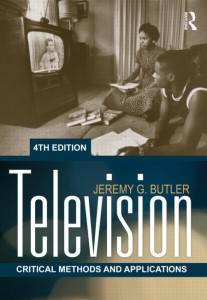[Update, February 23, 2017:
Due to persistent hacking, we’ve had to remove the list of links, but we have kept our link shortener going. So, individual links to sites should still work. We’re sorry for an inconvenience.]
We’ve just launched a unique online resource that enhances the printed textbook: a listing of all the Web links in the book, with embedded thumbnail versions of video links.
Instructors and students may now sample virtually all the video clips from a single Web page:
- tvcrit.com/find
Television: Critical Methods and Applications is the first media-studies textbook, to my knowledge, to shorten all the book’s video links to make them much easier to type into a Web browser. For example, you can browse to an All My Children clip by entering the following into your browser:
And you don’t have to struggle through the full URL:
- http://criticalcommons.org/Members/jbutler/clips/allmychildren.mov/view
Instead, that short URL bounces you over to the clip’s location. Easy peasy.
The listing of all these shortened links–with embedded video–on a single Web page makes it even simpler for instructors and students to check out Television‘s video resources.
We hope this will enrich your experience of Television. Please contact us if you find a broken link.
P.S. Thanks go to Lily Wang for helping prepare the embedded video.
